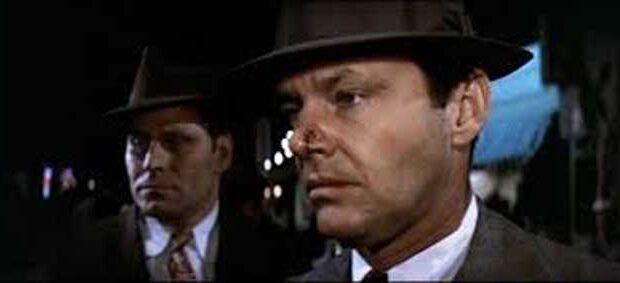Noir films reflect darker dangers of tunnel vision for protagonists, society overall

When it comes to diving into deep themes, the style of film noir has certainly proven itself as a powerful medium for storytelling in movies. Originating back in the 1940s and gaining traction in the ’50s, noir films have found themselves at the center of crime dramas, focusing on dark stories with even deeper themes. And even today, the style of film noir can be seen across a handful of movies, each taking their approach on the dark tones.
The typical ingredients that make up a noir film are what truly set the style apart from most other genres. These concepts are a collapsing justice system, an anti-hero-based protagonist, the femme fatale, a bone-chilling villain and an overall dark setting (i.e. plentiful nighttime scenes). Most noir films you will see, especially more classic films, focus on these five elements, making for a very entertaining story.
“My first introductions would be black and white versions [of the films] especially The Maltese Falcon and those Humphrey Bogart movies. There used to be on Saturdays, on TV back in the rabbit-ear days before cable TV, you used to be able to see those classic movies, and I would see them when I was quite small,” journalism and 21st Century Literacy teacher Brian Winkel said. “The whole tone of the noir-ness really helped to strike home what was really going on.”
Classic noir films such as The Maltese Falcon (1941) and Chinatown (1974), and more modern noir films like Collateral (2004), No Country For Old Men (2007) and Drive (2011) have all been met with glowing reviews from critics, with many of these regarded as potentially being the greatest noir film of all time.
It is some of the themes present in these films, however, where some of their darker tones truly come out. We all expect a story where our hero pulls through against the adversary and saves the day, but usually, this is not the case in film noir. Our protagonist typically is driven by their own motivations, whether or not they’re good or bad. It is this determination that leads them into these circumstances, and in most cases, digging themselves deeper into trouble with no resemblance to a light out, and often, not realizing they’re in too deep until it’s too late. The use of anti-hero protagonists cements their character for following their ideals, even if they don’t believe it’s right.
“The first noir movie that rocked my world, though, was Chinatown, and I didn’t see that until I was probably in college, and I just watched it on my own,” Winkel said. “First of all, it’s a very thrilling movie to watch. It’s kind of like the movie we watched in class because in No Country For Old Men, everybody thinks they’re getting a ‘cowboy’ or modern-day western hero narrative arc, and in the same sense, when you’re watching Jack Nicholson, you kind of get the same sense of what’s going on, but then, toward the end of the movie, you start to see the entanglements that are underneath the surface, and you realize that this is a much darker discovery than you thought, and at the end, I just remember sitting there thinking, ‘What just happened?’ And that’s the whole message, that sometimes, things are out of your control.”
Film noir can trace its origins all the way back to World War II, with countless troops returning home with a bitter taste in their mouths of a distrust in the government. The popularity of the style grew vast in the ’50s when the Cold War boomed and the public grew fearful of spies and nuclear war. These distrusts found themselves in film, which is why many classic noir films dealt with spies and espionage.
But perhaps the most impactful aspects of film noir are its ability to delve into themes within reality. Some of film noir’s most prevalent themes are the motives behind the protagonist, as well as their outcome at the end of the film. The protagonist may not always be the ‘good guy’ we wish them to be, nor do they always achieve the ‘walking-off-into-the-sunset’ ending. The truth of the matter is that people may carry more dirt than you realize. Sometimes, the people we see as heroes end up biting off more than they can chew, which can result in the demise of loved ones, or even themselves.
In short, reality isn’t always the cheerful or safe place we like to imagine it is. There are dark sides to reality that we sometimes forget exist.
“In journalism, especially when people are young, but also when people have certain agendas, sometimes people write a story from a point of view knowing how they’re gonna write that story without truly investigating the story,” Winkel said, “And especially young people have ideas of how things are gonna go, and they will ignore all the sidetracks, which are actually part of the truth of the story sometimes, and part of noir is also that you see a protagonist that has a very tunnel vision, laser-focused perspective, like if you ever listen to a politician, they will never be off message, but as a journalist, your job is to not let that happen. If you are gonna follow the code of ethics, you’re gonna follow to see the perspective, and sometimes the reality is dark. Sometimes it’s contextual. The answers are not clear.”
While modern noir films may not be as plentiful as they were in the ’40s and ’50s, there are still a good handful of noir films that create powerful narratives, compelling characters and deep themes that tap into the dark sides of society that we don’t always realize.









You must be logged in to post a comment Login